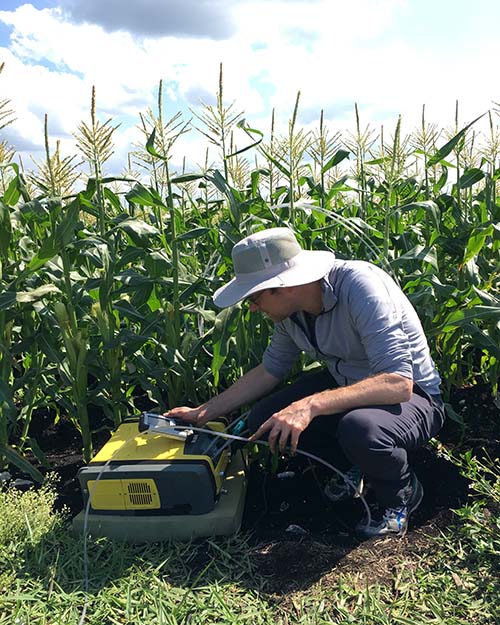
FORT LAUDERDALE, Fla. — High nutrient loss in the Everglades Agricultural Area is not uncommon. University of Florida scientists now know why.
In research conducted by assistant professor Willm Martens-Habbena and his team at UF/IFAS Fort Lauderdale Research and Education Center in collaboration with a team at the Everglades Research and Education Center in Belle Glade, they demonstrate how high abundances of microbes known as ammonia-oxidizing archaea (AOA) is the source of a problem that’s lasted decades and has caused concern for farmers, surrounding communities and scientists alike.
The discovery will help lead to new approaches to soil fertility and nutrient retention in this land in South Florida.
The study, Ammonia-oxidizing archaea are integral to nitrogen cycling in a highly fertile agricultural soil, has just been released on ISME Communications’ New Developments in Microbial Ecology. The research highlights the inner workings of the soil. Martens-Habbena and his team looked at the interactions that occur between the smallest of organisms, AOAs, and how they influence the EAA ecosystem.
“We describe the role of archaeal nitrifiers in nitrogen cycling in the organic soils of the EAA,” said Martens-Habbena. “Our study shows that these very fertile soils have very high nitrification rates without receiving any nitrogen fertilizer, which provides an explanation for the high nutrient losses.”
The results uncovered a mystery of nutrient loss in the EAA from an unexpected angle.
“Typically, agricultural soils get most of their productivity from nitrogen fertilizers,” he said. “But how do you explain nitrification or nitrogen loss when there is no fertilizer being applied?”
This question propelled the study, explaining the interactions that researchers hope will lead to the focus of a new approach to the problem.
“Our study identified the source and the organisms that are responsible for this condition. We now can find ways to control nitrogen losses by limiting or inhibiting the process,” he added. “This can either be done by inhibitors or with management practices that can reduce nitrification.”
The EAA, is an approximately 1,160 square-mile area south of Lake Okeechobee of highly productive agricultural land, growing primarily sugarcane in rotation with sweet corn, winter vegetables, sod and rice. It is considered one of the most fertile agricultural soils within the continental United States with high amounts of organic matter thus requiring little or no nitrogen fertilizer application. These former wetland soils are a major resource for agricultural production. However, during the last century about 80% of the soil mass has been lost to soil oxidation threatening future prospects for productive agriculture.
AOA are microbes found everywhere and are major contributors to the nitrogen cycle. They convert ammonia into nitrite for energy in an oxygen-dependent process called nitrification. Nitrogen is one of the most important nutrients for plant growth. But if nitrification becomes faster than plants take up nitrogen, nitrate can be lost by leaching, explains Martens-Habbena.
Click here for more information.









